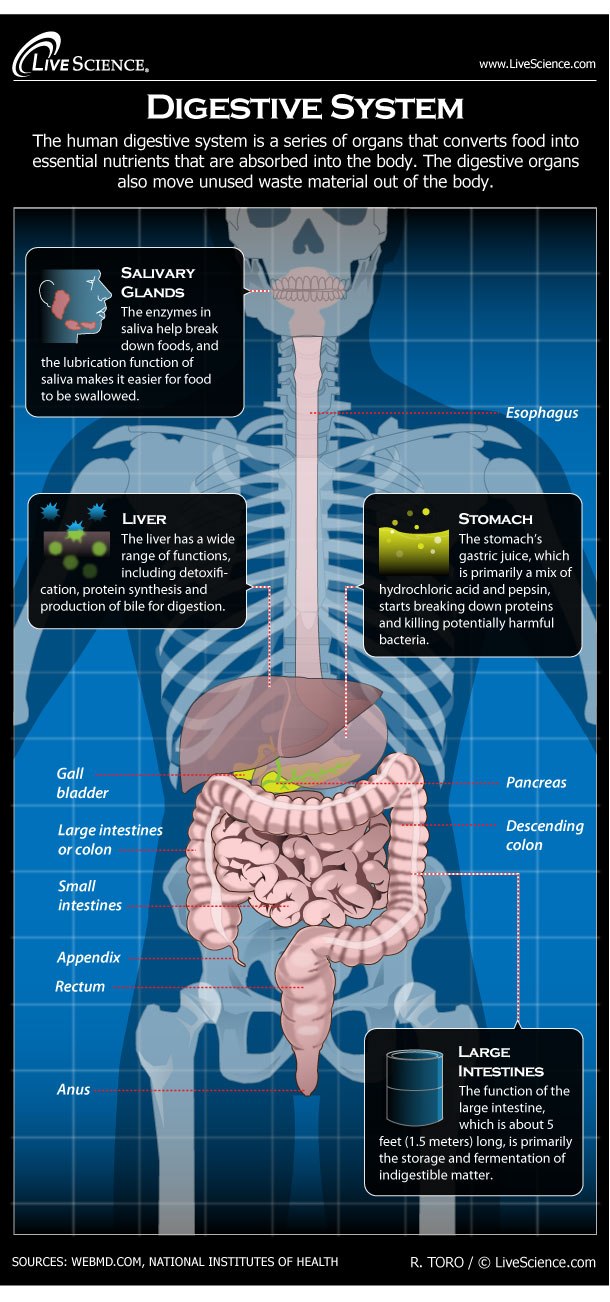Diagram of the Human Digestive System (Infographic)

The human digestive system is a series of organs that converts food into essential nutrients that are absorbed into the body. The digestive organs also move waste material out of the body.
The enzymes in saliva help break down foods, and the lubrication function of saliva makes it easier for food to be swallowed.
The stomach's gastric juice, which is primarily a mix of hydrochloric acid and pepsin, starts breaking down proteins and killing potentially harmful bacteria.
The liver has a wide range of functions, including detoxification, protein synthesis and production of bile for digestion.
The function of the large intestine, which is about five feet long (1.5 meters), is primarily the storage and fermentation of indigestible matter.
Related:
Get the world’s most fascinating discoveries delivered straight to your inbox.


